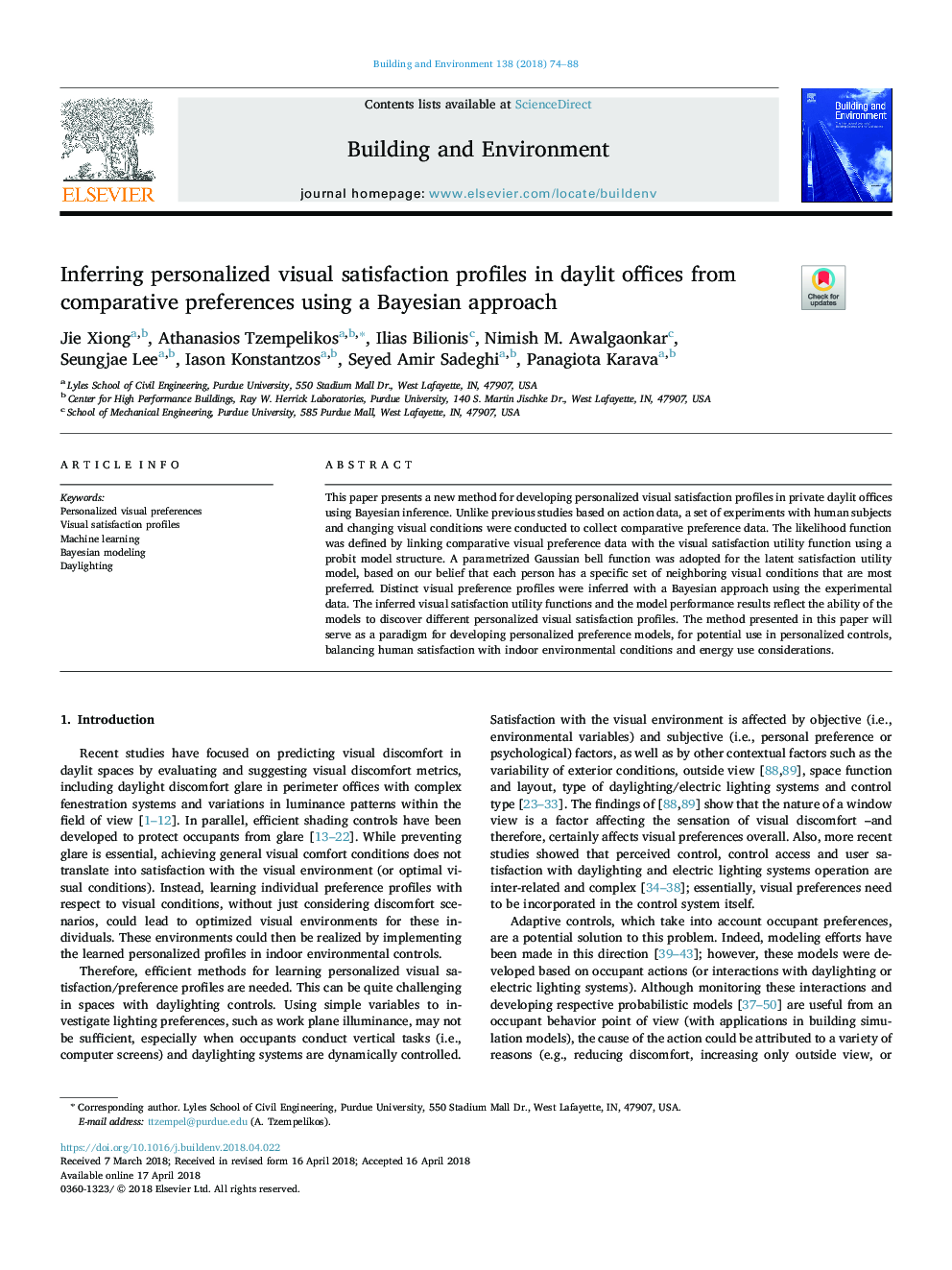| Article ID | Journal | Published Year | Pages | File Type |
|---|---|---|---|---|
| 6697170 | Building and Environment | 2018 | 15 Pages |
Abstract
This paper presents a new method for developing personalized visual satisfaction profiles in private daylit offices using Bayesian inference. Unlike previous studies based on action data, a set of experiments with human subjects and changing visual conditions were conducted to collect comparative preference data. The likelihood function was defined by linking comparative visual preference data with the visual satisfaction utility function using a probit model structure. A parametrized Gaussian bell function was adopted for the latent satisfaction utility model, based on our belief that each person has a specific set of neighboring visual conditions that are most preferred. Distinct visual preference profiles were inferred with a Bayesian approach using the experimental data. The inferred visual satisfaction utility functions and the model performance results reflect the ability of the models to discover different personalized visual satisfaction profiles. The method presented in this paper will serve as a paradigm for developing personalized preference models, for potential use in personalized controls, balancing human satisfaction with indoor environmental conditions and energy use considerations.
Related Topics
Physical Sciences and Engineering
Energy
Renewable Energy, Sustainability and the Environment
Authors
Jie Xiong, Athanasios Tzempelikos, Ilias Bilionis, Nimish M. Awalgaonkar, Seungjae Lee, Iason Konstantzos, Seyed Amir Sadeghi, Panagiota Karava,
